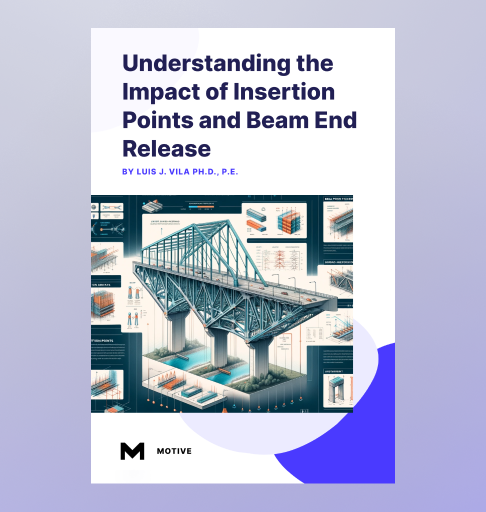For structures with stability issues, one way to check which specific link is causing the problem is start with a constrained model and begin relaxing its DOFs gradually. When you are releasing the DOFs and when you are running into stability issues, you would know which link release is causing that instability.
However, you may have a bridge structure that is stable but not behaving the way it was intended. To understand structural behaviors like this, verifications are needed. This tip talks about how to verify your bridge links, and how seemingly trivial definitions like insertion points and beam end release can cause big variations in bridge structural analysis results.
What is Beam End Release? Example: Simply supported beam
For a simply supported beam, you may have the link properly defined but you could end up getting unexpected result without careful validation. For the simply supported beam below, we are seeing some negative moment at the end. This is not what we expect to see in a simply supported beam, and is due to the support not being at the CG (centroid) of the section. However, if you add beam end releases, the negative moments at the ends will drop to zero


This is because when we use offset insertion point, midas Civil implicitly defines a link between CG and the offset insertion point. This link would result in the issue explained above.

Here we have 3 cases. The first one has the insertion point at the CG of the section, and we obtain the expected bending moment diagram for simply supported beam. The second and third examples have the insertion points at the top and the bottom of the sections. We observe negative moments at the beam ends as soon as we have insertion points not at the CG of the section. However, when we add beam end releases for the second and the third case, we then obtain the identical results for the three cases.
You can check more of these details in the download file.
Case Study: Negative Moments at Beam Ends
Case Study: Unexpected Moments in Truss Bridge Chords
Comparison of Moment Diagrams Before and After Adjustments

He is a structural engineer at GM2 Associates, Inc (Hartford, CT) with experience in design, modeling, and analysis of various types of bridges, including steel, arch, prestressed concrete, NEXT beams, box culvert, and pipe arch. He also has practical experience in bridge design and load rating, preparation of contract plans, bridge rehabilitation study reports, bridge demolition and erection analysis, design services during construction, among other aspects of bridge engineering. Proficient in various structural analysis software, including MIDAS/civil, AASHTOWare BrR, and CANDE.
👉 Learn more about the editor (click)






